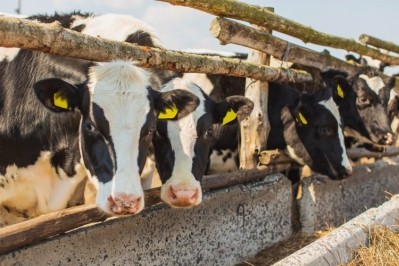USDA bets on bulk tank testing to curb bird flu spread

The US Department of Agriculture (USDA) is planning to roll out bulk tank testing nationally in a bid to contain the spread of the H5N1 virus in dairy cattle and beyond.
The virus, which was first reported in a dairy herd in Texas in March 2024, has affected 442 herds in 15 states to date, with more than half (233) of cases reported in California.
The virus is widespread among wild birds and can also be transmitted to poultry flocks, humans and other mammals such as rats. In dairy cows, it’s associated with milk production losses as infected animals begin to produce thick, colostrum-like milk; but infections can also go undetected unless raw milk, in which infected cows can shed the virus, is tested.
USDA’s strategy will involve a tiered system where bulk milk is tested at the regional level first; if HPAI is detected, testing progresses at the farm level, until herds in a particular area are deemed virus-free.
The total number of human cases is 44 to-date according to CDC, with most of these, 24, resulting from cattle-to-human transmission, and 19 – from poultry to humans. No human-to-human transmission has been reported so far and the risk to the general public remains low.
USDA is working with state and private veterinarians on the final details of implementation and will share guidance documents soon.
Lessons from Colorado
The USDA launched in May 2024 a voluntary bulk tank testing pilot for producers wishing to routinely monitor the health of their herds.
The agency also launched a voluntary initiative for producers who need to move their cows interstate but want to avoid the mandatory pre-movement requirements outlined in April’s Federal Order.
Both of these voluntary programs involve weekly bulk tank testing and a herd is deemed virus-free if raw milk tests negative for three weeks in a row.
Federal funding has also been allocated to support biosecurity measures and reimburse producers for milk production losses; but the outbreak continued to progress during the summer, most notably in Colorado and California.
HPAI became a major headache for egg producers in Colorado, with the state losing 70% of its laying hens due to the virus. The state implemented bulk milk testing after detecting H5N1 in two counties.
This strategy helped uncover 11 additional dairy farms with unreported infections and is thought to have helped eradicate the HPAI from the state’s dairy herd, where the last H5N1 case was reported in mid-August 2024.
In the past 30 days, the number of states with known avian influenza detections in dairy herds has dropped from 14 to two.
But USDA believes additional steps are needed to support effective biosecurity measures, which are key for states and farmers to contain and eliminate H5N1 infections from their livestock.








